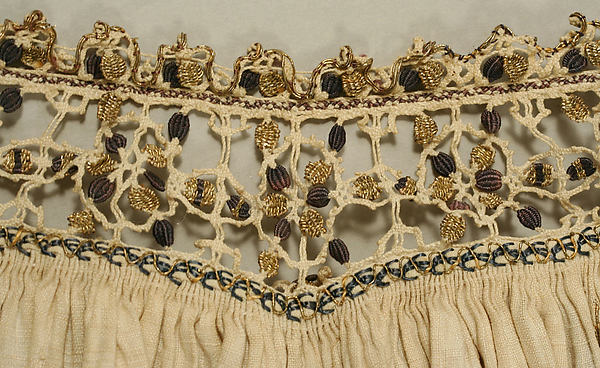 |
| Miniature of Anne Boleyn. While this image has the best detail of any of the French Hood portraits there is still debate over the portrait being painted within her life time. |
So do you all remember the dress I made based off of Anne Boleyn's miniature? I chose the miniature because it seamed to have the best detail. Well, I was never fully satisfied with Anne just having gold brass beads on her neckline. They gave the idea of what the gown had, and I was asked to do this on short notice. All of that aside, now I have been allowed the time to go back and do it right. so I plan to.
 |
| Detail from the beading on Anne Boleyn's Bodice. |
After some research and digging around I stumbled across a few extent garments from The Metropolitan Museum of Art in New York. amazingly they have thread covered buttons made with gold thread, and on one example they are purely decorative. Any avid costumers out there can imagine the excitement I got from this discovery.
 |
Copyright of the Met Museum of Art, New York City.
Accession Number:41.64 |
So Now I am trying to reproduce these using DMC gold embroidery thread (size 5 pearl split in half) and some wooden beads. I am starting with the directions in The Tudor Tailor for the buttons I have 29 more to go to completely replace the ones on my gown and placard. When all of the brass beads are replaced I will be sure to post new images.
8
 |
| Current "button being worked on. |
"Blouse." The Metropolitan Museum of Art. New York. 8/6/2012




Comments
Post a Comment